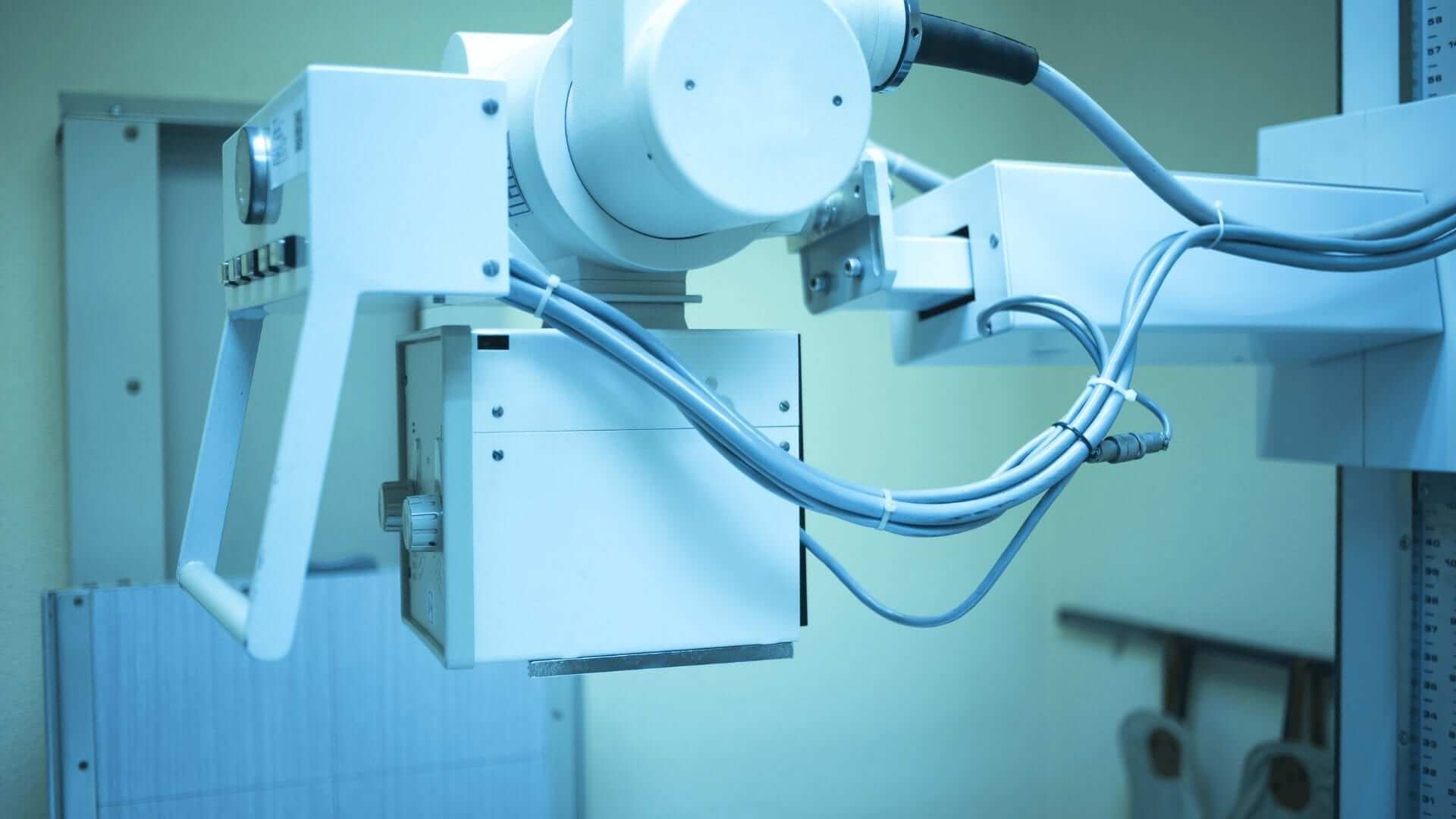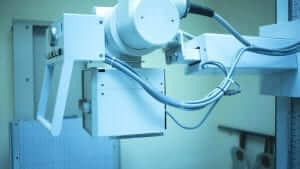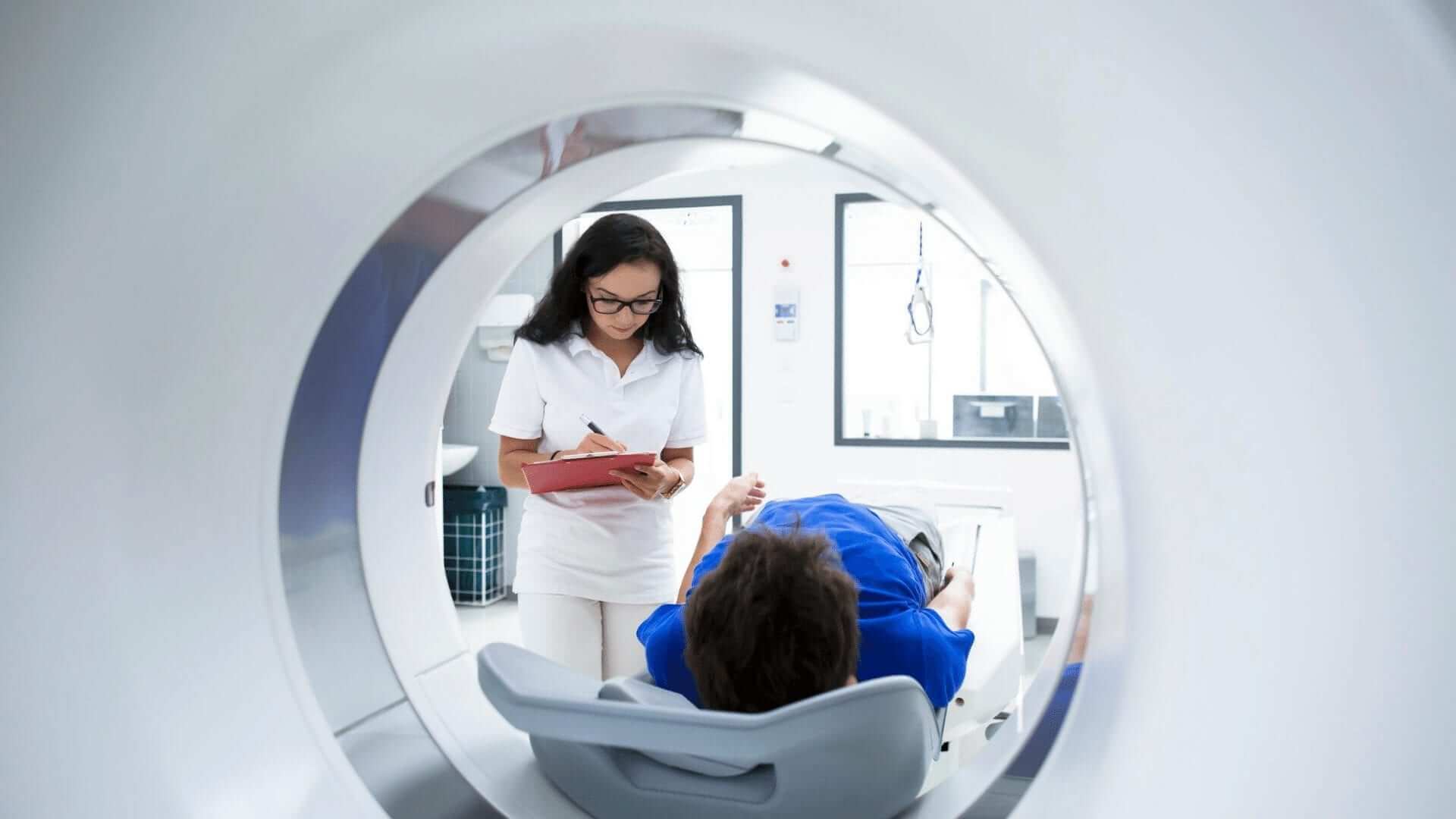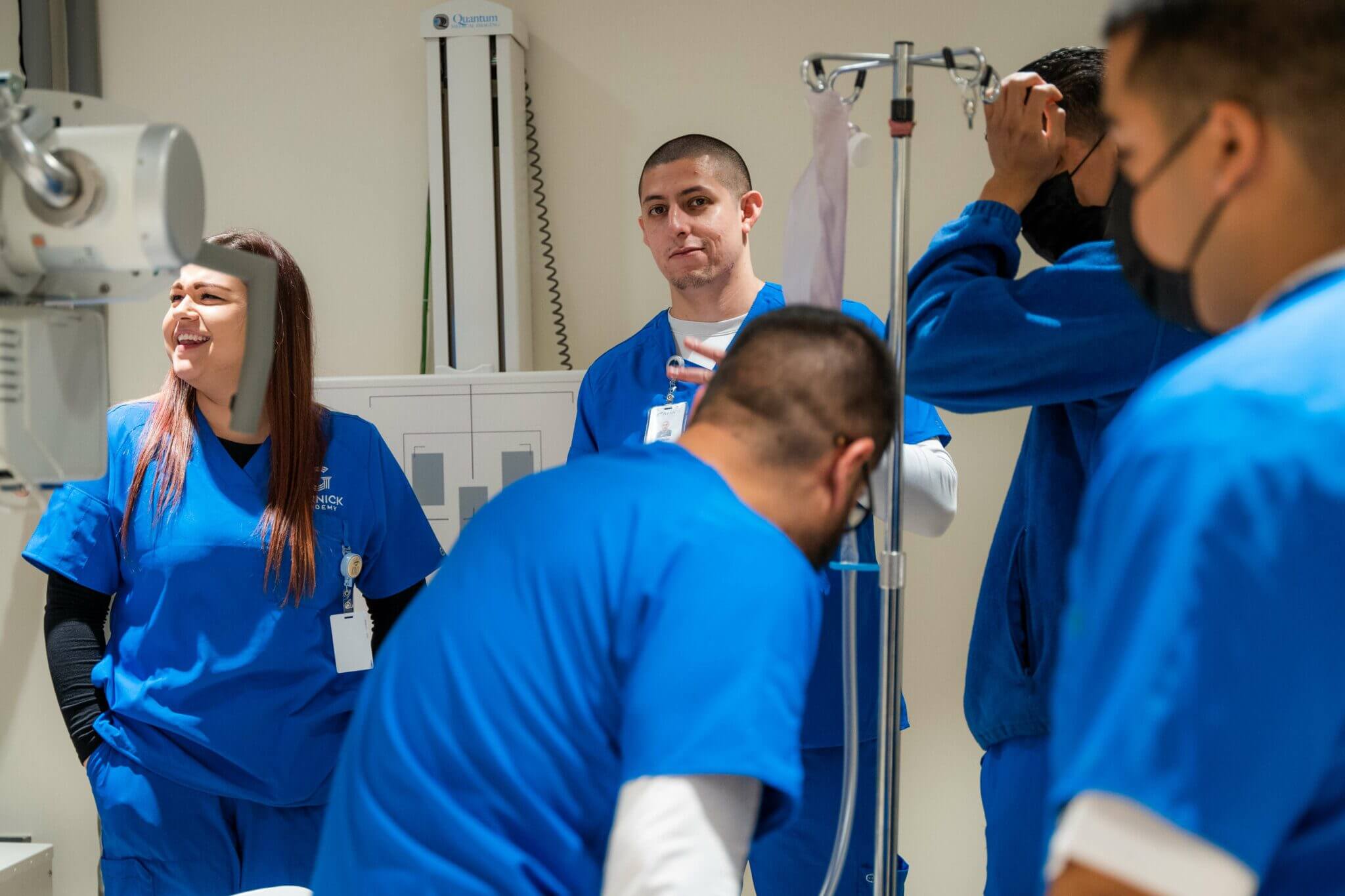Options for Advancement for Radiologic Technologists
Date: September 30, 2022
There are ways Radiologic Technologists (RTs) can advance their careers. This blog gives practical tips for taking your RT career to the next level.
Introduction
In doctors’ offices, hospitals, and radiology clinics across the country, you can find Radiologic Technologists (RTs) hard at work. These professionals provide critical diagnostic imaging services to healthcare communities. They are vital professionals in the wellness industry at large. While you can become a Radiologic Technologist in as little as two years, the degree’s trajectory stems from its many opportunities.
Moreover, here are five specialties to consider as you look to advance your career as a Radiologic Technologist.
One, Mammography
One Radiologic Technology specialty is mammography. In short, mammography is a specialized area using low-dose X-ray imaging. Primarily, mammograms are used to detect breast cancer. Because of the procedure’s preventative qualities, the field has undergone significant technological advances. Consequently, the procedure’s evolving nature makes it an excellent selection for Radiologic Technology professionals wanting to stay in step with technology.
Mammography Salary Information
As a whole, the salary for mammography professionals is comparable to that of most Radiologic Technologists. According to the Bureau of Labor Statistics, the average salary in California in May 2021 was approximately $61,370.1*
Mammography Job Satisfaction
By and large, mammographers report satisfaction with being part of early disease detection and prevention. Often these professionals cite involvement and their direct work with patients as benefits. Additionally, ongoing access to developing medical trends and equipment is a perk.
Work in Mammography
Working in digital mammography allows technologists to take more precise images. They do this while using lower radiation doses than those used in traditional radiology. Additionally, breast tomosynthesis, a new type of digital X-ray mammogram, facilitates two- and three-dimensional imaging. Consequently, these procedures allow specialists to effectively assist in detecting tumors.2
Needed
In brief, earning a specialty in all things mammography generally requires the following:
- A.S. Degree
- 40 hours of Continuing Education Credits
- Performing 25 Supervised Mammograms3
- Obtaining Certification
- State Licensure2‡
Two, MRI
A second Radiologic Technology specialty is magnetic resonance imaging (MRI). Similarly, an MRI technologist‡ is a medical-imaging professional who uses magnets and radio waves within a large tube-like machine. Specifically, the procedure creates detailed images of body tissues and organs. “Healthcare professionals use MRI scans to diagnose various conditions, from torn ligaments to tumors.”4
MRI Job Satisfaction
U.S. News and World Report ranked “MRI technologists #14 in Best Health Care Support Jobs and #96 in 100 Best Jobs.” (Jobs were rated according to their ability to offer an elusive mix of factors.)5
Work in MRI
Notably, MRIs are considered relatively non-invasive medical procedures. Yet, they provide high-resolution images used to diagnose various health issues. Chiefly for these two reasons, they are considered one of the most remarkable inventions of the last century.
MRI Salary Information
Considering many variables, work climates, and other factors, the Bureau of Labor Statistics cites the average salary for these specialists as approximately $108,580.6*
Needed
You may want to pursue this specialty if you are:
- Proficient in Computers
- Have Experience in Radiologic Technology
- Possess Knowledge in Cross-sectional Human Anatomy2‡
In brief, those wanting a future in the field should also seek courses specializing in MRI scanning while obtaining an A.S. degree.
Three, Angiography
Another specialty area for Radiologic Technology professionals is as an angiography technologist, a.k.a. interventional radiologist. In short, an angiography technologist works in X-ray imaging, with dye injected into the bloodstream. This is for imaging patients’ veins and blood vessels. To summarize, the procedure uses a special dye contrast and X-rays to cause ‘shadows’ of the veins, observing blood flows. The procedure identifies obstructions or finds evidence of strokes and tumors.
Angiography requires dye injections. Because of this, the semi-invasive imaging technique is generally restricted to situations where non-invasive procedures would be ineffective.
Angiography Job Satisfaction
As a whole, angiography technologists work within the coronary, cerebral, pulmonary, and renal fields. The job outlook for this is expected only to increase.
Angiography Salary Information
As of June 3, 2021, the average annual pay for an angiography technologist in the U.S. was $81,356.7*
Needed
If one is interested in this specialty, he or she should:
- Hold a Bachelor’s Degree in Radiologic Technology
- Have Completed Training in an Angiography Department
- Complete a Written Exam
- Maintain certification2
Four, Chief Radiologic Technologist
Working as a chief radiologic technologist is the fourth career-advancing opportunity. This is an excellent field to pursue if one desires to be in management. Primarily this person oversees teams while acting as the head of a radiology lab.
Chief Radiologic Technologist Job Satisfaction
Simultaneously, many chief radiologic technologists pursue business degrees since they manage the lab’s day-to-day business operations. They mostly supervise a group of paraprofessional staff, usually holding some authority over personnel decisions and recommending new equipment and modifications. Additionally, they perform necessary RT procedures.8
Chief Radiologic Technologist Salary Information
These managers make approximately $84,683 annually.8* A chief radiologic technologist’s duties include overseeing services, maintaining safety standards, evaluating X-ray accuracy, and scheduling work assignments.
Needed
The profession typically requires three to five years of experience in a related area with thorough knowledge of functional regions and departmental processes. Management positions in hospitals or facilities are accredited by Det Norske Veritas (DNV) Healthcare Inc., part of a global independent foundation9 or The Joint Commission (TJC).10
The position mostly requires:
- A Bachelor’s Degree or Higher
- Significant Experience
- Proper Registration8
Five, Educator
Another Radiologic Technology specialty is serving as an instructor. For those who enjoy didactics, becoming a radiologic technology educator is an excellent way to pass on knowledge. Having one foot in healthcare and the other in education describes this vocation. These hybrid professionals often work at higher-learning institutions and different geographical environments, training future technologists.
Instructor Job Satisfaction
In colleges and universities, instructors oversee clinical experiences and ensure students learn relevant skills. While in wellness centers, these professionals train employees regarding equipment, accrediting procedures, and standard operating processes. Anecdotally, most instructors report satisfaction in training young (and older) minds.
Instructor Salary Information
This type of educator’s salary typically lies on the upper end of the pay scale. According to Economic Research Institute, these specialized educators had a gross annual salary in the US of around $109,939.11*
Needed
A radiologic technology educator role generally requires one to obtain:
- An A.S. Degree
- Two Year’s Experience as a Radiologic Technologist
- Certification and Registration
Teaching experience, proficiency in instructional technology, and pedagogy are optional qualifications that can be learned on the job.
Considering These Options
Above are five ways to advance your career as a radiologic technology specialist. Yet, there are additional routes. Some Radiologic Technology professionals pursue ultrasound, while others go into nuclear medicine. Truly just short of the sky is the limit.
Pursuing a bachelor’s degree can open up opportunities in more advanced fields or leadership and management positions. If this interests you, consider furthering your education with a B.S. in Diagnostic Medical Imaging. Whichever specialization you select, you will find many opportunities to provide critical diagnostic imaging services as a crucial healthcare industry member.
In Summary
Do you think you may be interested in becoming a Radiologic Technologist? If so, let us help you take those first steps. Contact Gurnick Academy of Medical Arts today.~
*This is only an estimate. Individual experience may vary depending on experience, training, location, geography, and company culture.
† State Licensure May Be Required.
‡ A special functional MRI (fMRI) can measure brain activity. The fMRI is an RT specializing in MRI imaging which also works with neurologists and neurosurgeons.
Citations:
1 “Radiologic and MRI Technologists.” Occupational Employment Wage Statistics. March 31, 22. Bureau of Labor and Statistics, U.S. Department of Labor. (Accessed May 23, 2022.)
2 ^a, b, c, d Joint Review Committee on Education in Radiologic Technology (JRCERT®). “Entry to Mid-level Careers: A World of Career Opportunities in RT.” Association for Medical Imaging Management, American Healthcare Radiology Administrators. Jan. 2021. (Accessed Jan. 5, 2021.)
3 “Frequently Asked Questions.” Medical Technology Management Institute, CHP Continuing Education. (Accessed Jan. 4, 2021.)
4 “MRI Scans.” Medlineplus.gov, National Library of Medicine. Dec. 22, 2016. (Accessed Sept. 30, 2022.)
5 U.S. News Best Jobs. “MRI Technologist Ranks among Best Jobs of 2019.” Usnews.com, U.S. News and World Report, LP. 2016. (Accessed Sept. 30, 2022.)
6 “Magnetic Resonance Imaging Technologists.” Www.bls.gov. May 2021. (Accessed May 23, 2022.)
7 n.d. “Angiography Salaries.” Ziprecruiter.com. ZipRecruiter, Inc. (Accessed June 10, 2021.)
8^a, b, c “Radiologic Technologist II Salary in the United States.” Salary.com, 2020. (Accessed Jan. 5, 2021.)
9 “Union Hospital Accreditation.” 2019. Cleveland Clinic. 2019. (Accessed June 10, 2021.)
10 Marketing, B. H. M. 2012. “TJC Accreditation–How to Become Accredited.” BHM Healthcare Solutions. BHM. Dec. 18, 2012. (Accessed June 10, 2021.)
11 n.d. “Radiologic Technology Teacher Salary.” Salary Expert. Economic Research Institute. (Accessed Feb. 22, 2021.)






